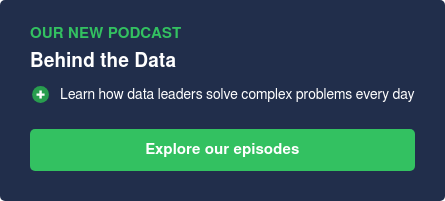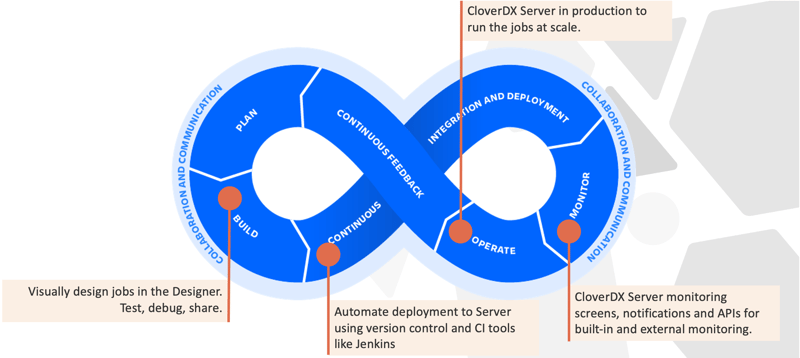DataOps is an emerging discipline that hinges on an agile methodology.
It champions the continuous delivery of analytics to provide valuable insights to your business. Fast, reliable and high-quality data is the name of the data game.
Studies show that agile projects complete 31 percent faster and have a defect rate which is 4x better than the industry norm.
So, on that note, here are five compelling business and technical reasons for embracing DataOps:
What Is DataOps? The Essential Introduction1. It promotes agile development
Without an agile DataOps approach, data projects can take years. Of course, this means that any insights you gather will soon become outdated.
In addition to this, top-down decisions, multiple levels of management and waterfall development simply don't work. They cause delays and create bad data. You need to be able to gather your business requirements, code, implement and test data projects reliably and quickly.
DataOps ensures that code gets into production fast and provides continuous delivery of value. The agile methodology promotes short, sharp sprints that take only a matter of weeks, resulting in faster actionable business insights.
2. It extracts value from your data
When you rely on data to make well-informed decisions, you can't afford for it to be inaccurate.
In complex data landscapes, fixing data quality is the hardest and most time-consuming part of the data management process. And often, getting a solid understanding of your data can be difficult.
DataOps integrates testing into your data-analytics pipeline to give you the quality control needed to unlock the value of your data. It enables a clear measurement and transparency of results that can be used to make competitive business decisions.
The multiple, collaborative components of a high-performing DataOps process will ensure that the data lifecycle delivers business-critical, timely and valuable insights.
3. The majority of processes are automated
DataOps is the art and science of automating the lifecycle of data analytics to reduce errors, improve data quality and promote agility.
Automation is important due to the huge number of building blocks involved in the data lifecycle. It cuts down on many manual and time-consuming processes such as data reporting and data quality checks, enabling your team to improve and facilitate your projects.
An automated approach will allow your teams to:
- Problem solve
- Plan for capacity
- Work independently
- Maintain transparency
- Unify development and operations workflow
Ultimately, automating as much as possible will tear down silos and streamline your DataOps processes. Much of the repetitive data pipeline work is taken care of and ensures the demands of a modern data-driven business are met.
4. The process is adaptable and easy to maintain
Data projects are diverse, constantly changing and require a lot of attention. In larger organizations, you might have a production team looking after fifty different applications at any one time. In addition to this, 'localized' teams may build out analytics projects that are decentralized from the rest of the business.
A well-designed DataOps process streamlines your processes and creates harmony between local pockets of innovation and the centralized development of data. In this environment, analytics undergo refinement locally and when those ideas prove worthy of wider distribution, they can be promoted to a central platform to reliably and robustly implement at scale.
5. It encourages communication
DataOps is very heavy on communications and relies on teams talking to one another. Any organization that's looking to develop their business intelligence efforts will need to coordinate the analysis of their data with the general operations of their business.
DataOps is the set of best practices that can make sure that happens.
DataOps bridges the gap between those who collect the data, those who analyze the data, and those who put the valuable insights to good use.
DataOps with CloverDX
The DataOps pipeline improves the integration, reliability and delivery of data insights to the business.
There are a lot of moving parts involved with adopting and maturing your DataOps discipline. But the benefits far outweigh the barriers.
CloverDX can help you move towards a DataOps approach by making development and iteration faster, collaboration easier and automation a key pillar of your data processes. Read more about why CloverDX should be part of your DataOps toolkit.
Why CloverDX Should Be Part Of Your DataOps ToolkitThere isn't a single person responsible for DataOps. A well-designed DataOps pipeline connects data engineers with the brains behind the operations of the business. By connecting these groups together, you can create a streamlined and solid system that will extract high-level business value.
To find out more about our DataOps approach, check out our recent webinar and learn how to go From Old School Data Pipelines to DevOps and DataOps






